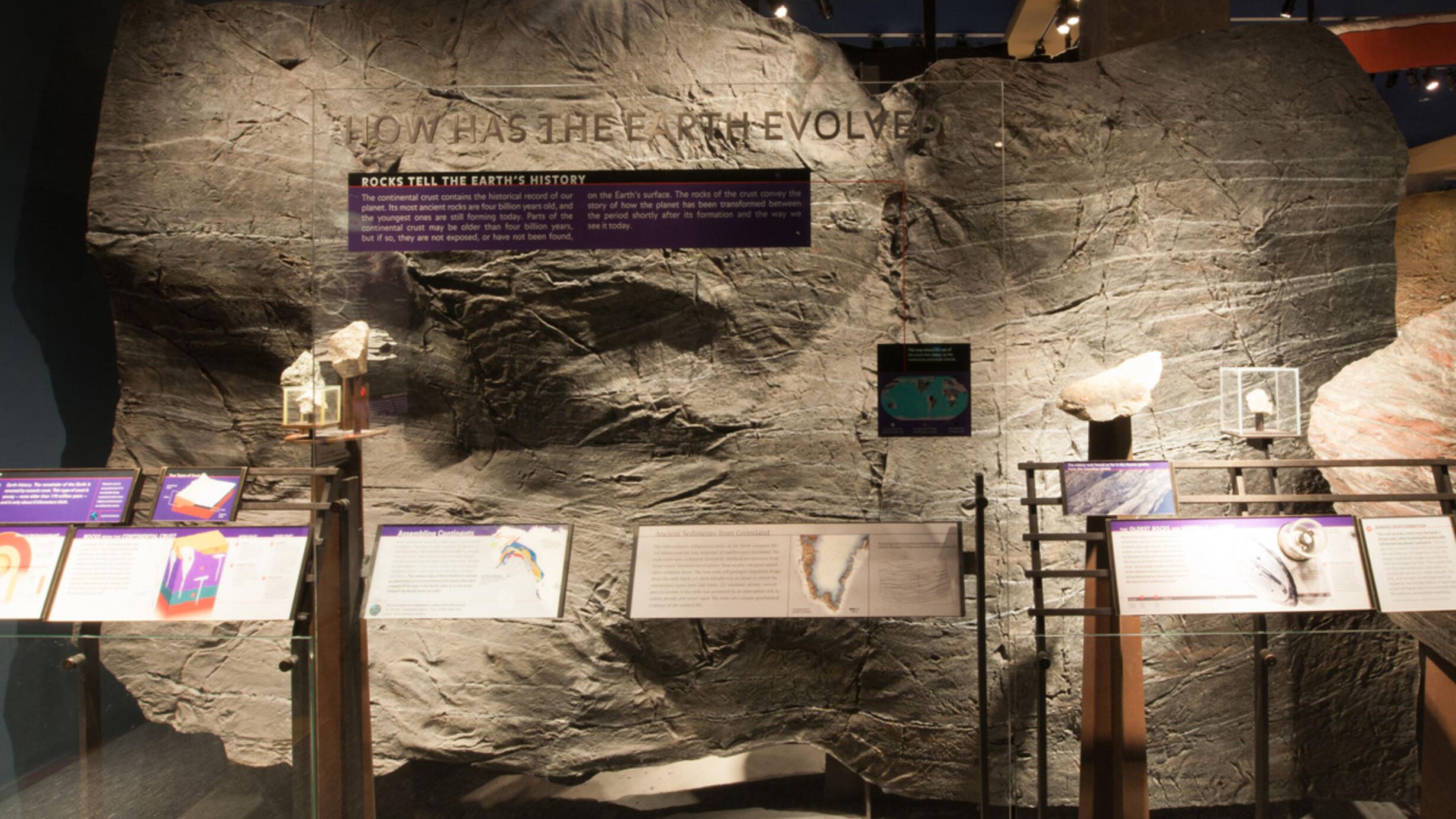How Has the Earth Evolved?
Part of Hall of Planet Earth.

Rocks Tell the Earth's Story
The continental crust contains the historical record of our planet. Its most ancient rocks are four billion years old, and the youngest ones are still forming today. Parts of the continental crust may be older than four billion years, but if so, they are not exposed, or have not been found, on the Earth’s surface. The rocks of the crust convey the story of how the planet has been transformed between the period shortly after its formation and the way we see it today.
How Did the Earth Form?
The Sun and its family of planets formed when a cloud of dust and gas condensed 4.6 billion years ago. Several hundred million years after the Earth took form, an outer crust developed. But these surface rocks are no longer available for study: they have disappeared into the interior of our dynamic planet. Our only clues to how the Earth formed come from meteorites and the Moon because both formed simultaneously with the planets.
What Is the Earth Made Of?
The great bulk of our planet is composed of oxygen, iron, silicon, and magnesium. Since the Earth formed relatively close to the Sun by the aggregation of smaller solid bodies, it is a rocky, solid planet whose atmosphere formed later. The more remote, giant gas planets, from Jupiter to Neptune, formed predominantly from the lighter, more volatile elements, like hydrogen and helium.
© AMNH
© AMNH